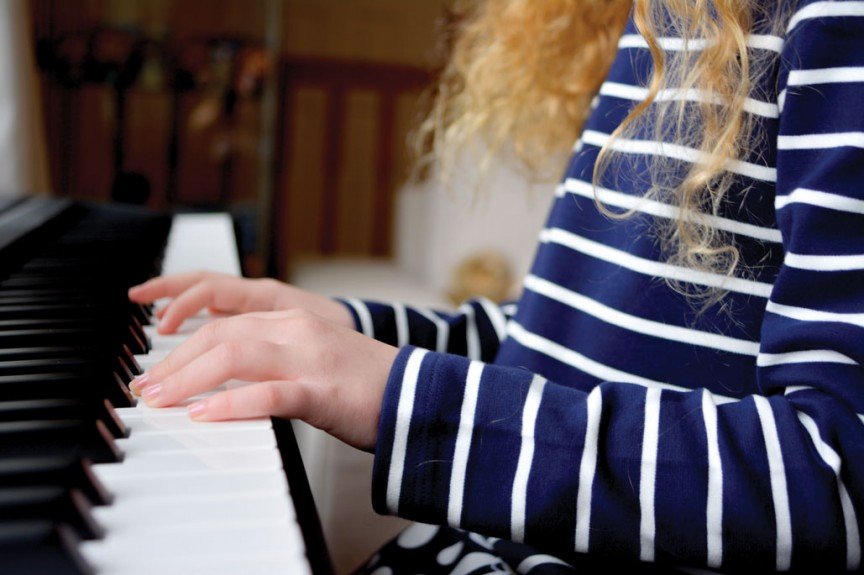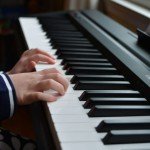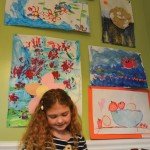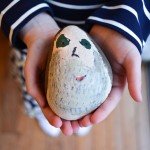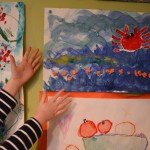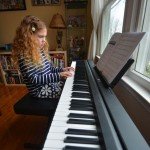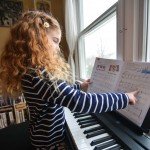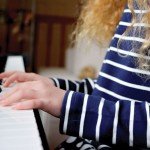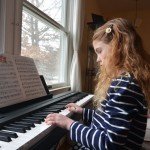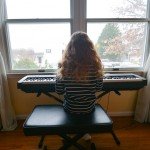+ By Leigh Glenn + Photos by Marie Machin
Around Annapolis, eight-year-old Vivien Kaplan may be best known for belting out “Let It Go” from Disney’s Frozen for a holiday commercial as well as for her appearance as Molly in The Colonial Players’ Annie. But her interest in the arts goes beyond music and theatre. She embodies what some ancient Greeks termed the daimon—a mythic sense of calling, unique to each of us, that shapes us as we shape it. Kaplan’s calling may be to entertain.
 Kaplan’s mother, Melanie Loughry—whom Kaplan calls her biggest influence—named her for actress Vivien Leigh and played music to her while she was still in the womb, everything from classical pieces to songs from Hollywood’s Golden Age of film. After a successful audition for All Children’s Chorus of Annapolis, Kaplan spoke about her passions and pursuits.
Kaplan’s mother, Melanie Loughry—whom Kaplan calls her biggest influence—named her for actress Vivien Leigh and played music to her while she was still in the womb, everything from classical pieces to songs from Hollywood’s Golden Age of film. After a successful audition for All Children’s Chorus of Annapolis, Kaplan spoke about her passions and pursuits.
As a toddler, she watched old musicals with her mom. Among the first was Singin’ in the Rain. She walked around the house, singing, acting, and dancing. “I also like trying to dance like people in Busby Berkeley films,” says Kaplan.
Loughry sought classes and teachers to nurture Kaplan’s interests, including the Music Together program, music theatre at Maryland Hall for the Creative Arts, and vocal studies at Naptown Sings. Grandmother Kathy Larrabee arranged for weekly piano lessons.
 Kaplan likes visual arts, too, and has done so since attending Artstart at age four, when she made “Blossom Tree” and finger-painted a red crab with googly eyes—work that adorns the family dining room. More recently, she took classes at ArtFarm, including one where students created a Day of the Dead project. Kaplan paid tribute to her late father, Jeff Kaplan, an internationally known sound engineer whose love of travel whetted his daughter’s appetite for adventure. “I painted my dad’s face on rocks, one to give away—the teacher hid it downtown, and one was to keep, so that one I kept.”
Kaplan likes visual arts, too, and has done so since attending Artstart at age four, when she made “Blossom Tree” and finger-painted a red crab with googly eyes—work that adorns the family dining room. More recently, she took classes at ArtFarm, including one where students created a Day of the Dead project. Kaplan paid tribute to her late father, Jeff Kaplan, an internationally known sound engineer whose love of travel whetted his daughter’s appetite for adventure. “I painted my dad’s face on rocks, one to give away—the teacher hid it downtown, and one was to keep, so that one I kept.”
After performing in Annie in December 2013, she traveled with her father to New York City’s theatre district on Broadway for the first time to see the play there. She entertained the singing waitstaff at Ellen’s Stardust Diner, joining them for a rendition of “Cabaret.”
In late 2014, Kaplan was one of ten people—out of four thousand—chosen for the Disney and Kohl’s Sing Your Heart Out contest. Her father was headed to California for work, so Kaplan flew with him. She sang a portion of “Let It Go,” earbuds in and TV cameras on cranes whirring close to her face. She had been on TV before—cheering for the Orioles and as a toddler in a public-safety ad—but this was new territory for her. Back at the hotel, her father put on a click track and urged her into his “gigantic sneakers.” Using a flashlight as a spotlight and a toilet plunger as a mic—the handle end, not the plunger end, Kaplan is quick to point out—he had her sing. “He was hilarious,” she says.
 Live or recorded, Kaplan is never bothered by nerves. “Really, I feel like what helps is if you act like nobody’s there and act like you’re just singing like you usually do—like you’re practicing and don’t think you’re going to mess up, just go on.”
Live or recorded, Kaplan is never bothered by nerves. “Really, I feel like what helps is if you act like nobody’s there and act like you’re just singing like you usually do—like you’re practicing and don’t think you’re going to mess up, just go on.”
Kaplan likes being behind the camera, too. She created a short film with her dolls in silent-film style, complete with player piano.
Whether she’s picking out tunes on her ukulele and putting words to them or writing for American Girl (she says she wants to be an author when she grows up), she sees the world as a place rich in meaning.
The arts provide a feast for Kaplan’s imagination. “Sometimes when you’re in the arts, you notice things a lot more,” she says. “An example is, someone might look at something—this hair clip,” she says, taking a clip with a large black bow from her hair. “This looks like a face, and this looks like an eye, and there’s the mouth with a giant bow on the head, and it’s talking.” Her infectious laughter catches. “You find that your hair clip looks like a face—with lots of teeth!” █

